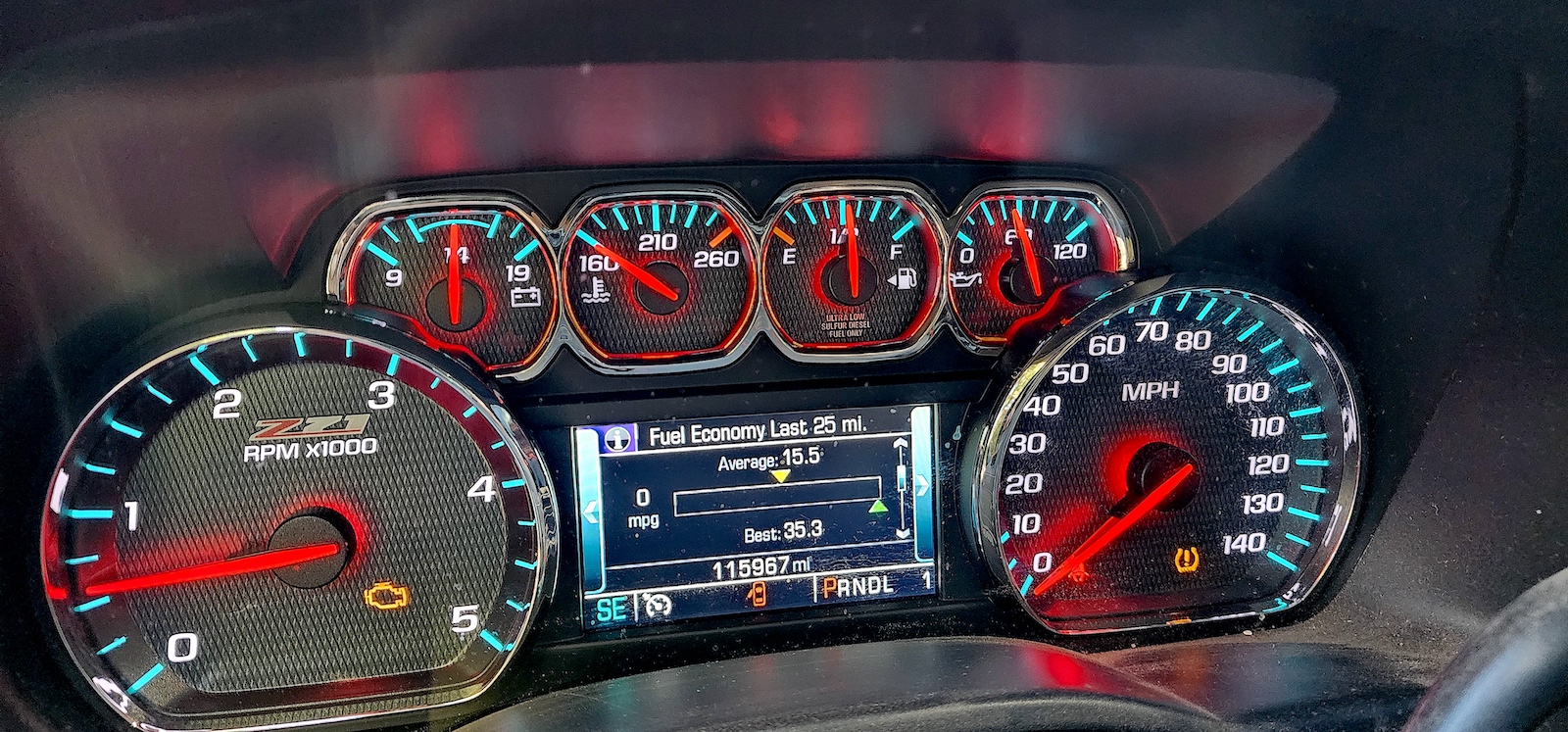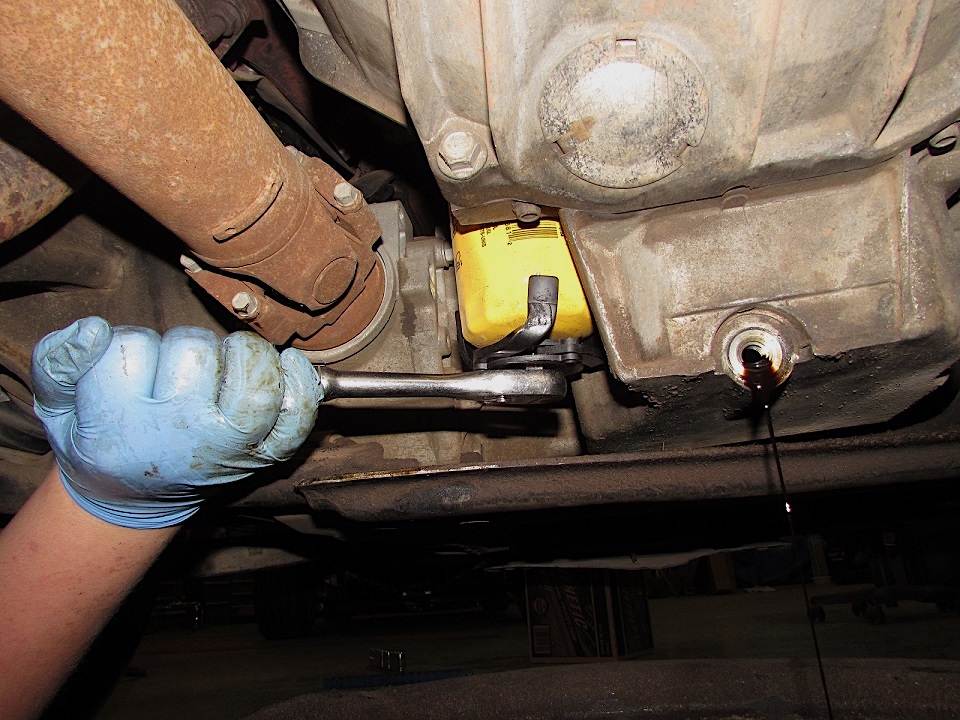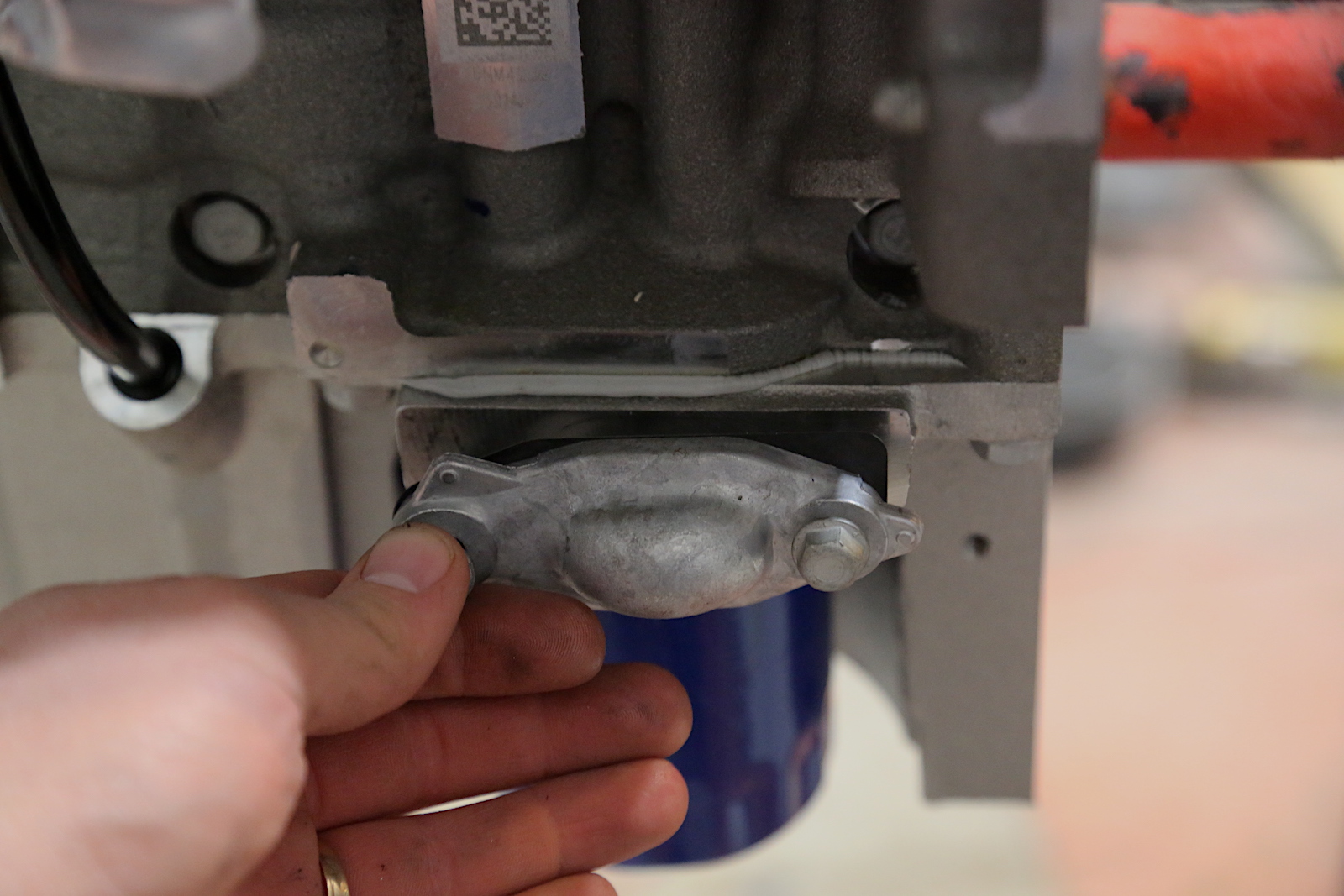Contents
Oil pressure is measured in pounds per square inch, or psi. Correct oil pressure depends on your oil type.
- Conventional oil requires a minimum of 10 psi per 1,000 rpm. At full throttle, say 6,500 rpm, the engine should make a minimum of 65 psi with conventional oil.
- Synthetic oil doesn’t require as much pressure. The minimum is five psi per 1,000 rpm, so the same engine with synthetic at 6,500 rpm is safe with just 32.5 psi.
Read: Synthetic Oil or Conventional Oil – What’s Best for Your Vehicle?

The oil pressure indicator is the upper far right gauge, noted by the oil can icon.
Your engine oil pressure is acceptable if your engine is within those specs. Some manufacturers may require higher baseline pressures, so confirm with your owner’s manual.
Driving with low oil pressure will kill your engine. It is that simple. Low oil pressure means the engine is not being adequately lubricated. It could make it 1,000 miles, or it might not make it across the street, but rest assured, it is a ticking time bomb with a very short fuse.
What Causes Low Oil Pressure?
If your gauge shows less than the recommended minimum, then you have an issue that needs to be addressed. Sometimes, it is a simple fix, like adding more oil, but sometimes it indicates a serious internal problem.

The first step after checking the oil level is a complete oil service with a new filter.
The most common causes of low oil pressure in an otherwise well-maintained engine are:
- Low oil level
- Wrong engine oil viscosity
- Clogged oil filter
More serious mechanical failures cause low oil pressure. They often require an engine rebuild, but if you catch them before major damage is done, you can save the engine.

O-rings and gaskets can shrink, distort, or blow out on the pick-up tube. This is a common issue for some engines and causes low oil pressure.
Oil pump failure – When this occurs, you usually lose the engine unless you’re lucky enough to catch the oil pump failure right when it happens. An engine without oil flow will seize within minutes.
Clogged pick-up tube in the oil pan or a bad gasket – This is common in older engines, especially if you use cheap oil or don’t change the oil regularly. Sludge, dirt, debris, and other contaminants settle at the bottom of the oil pan where the pick-up tube is, preventing the oil from being drawn into the pump. Sludge can be cleaned out in most models by removing the oil pan and cleaning the pan and tube.
Engine wear – This is a rebuild-or-replace situation. Once the engine has worn to the point that the oil pressure is below the minimum spec, the engine bearings are worn out and, at a minimum, must be replaced.
Checking Oil Pressure Without a Gauge

Some engines make it easy to add a second oil gauge, such as GM LS and LT engines. They have a bypass cover, which can be replaced with one that has a port for an oil sensor.
Your engine’s electronic control module (ECM) has a pressure sensor in the oil system. You can use an on-board diagnostics (OBDII) scan tool with live mode to check the pressure sensor reading.
If your vehicle is older and lacks an ECM, you can use a mechanical or electronic gauge to check the oil pressure. A mechanical gauge is easier to use because it doesn’t require electrical connections.
Shop now for oil pressure gauges- Make sure the engine is cool.
- Locate an available oil pressure port. These vary by engine, but a quick search on your specific engine will show you where to access the oil port.
- Use the proper adapter to thread the oil capillary tube or electronic sensor into the oil port.
- Connect the tube or wiring to the gauge. If using an electronic gauge, wire it to the battery as detailed in the instructions.
- Start the engine and watch the gauge to verify the oil pressure at startup and idle.
- Rev the engine to 2,000 and 3,000 rpm, and note the readings to confirm whether they are normal or low.
How to Boost Oil Pressure?
If you suspect you have low oil pressure, shut off the engine immediately, pull over in a safe location, and inspect the vehicle.

Make sure you are using the correct oil for the engine. If the engine has high miles, you can step up to the next thicker oil, which is the second set of numbers.
- First, check the oil level. Being a quart low is not enough to affect the oil pressure during regular use, but being two or more quarts low can. If you don’t check your oil regularly, you may find that your engine consumes a lot of oil. All engines burn oil; it is a part of the combustion process. This is normal, and it’s not uncommon to burn a quart every 5,000 miles for modern direct-injected engines.
- Next, change the oil and filter with the correct oil weight the manufacturer recommends. If the old filter was clogged or the wrong weight was used in a prior oil change, this could restore your oil pressure.
A deeper inspection is required if following these steps does not increase your oil pressure. First, verify that the gauge is functioning correctly. This can be done by installing a mechanical pressure gauge into a pressurized oil port or by running a diagnostic with a full-service scan tool.
Consider switching to the next heavier oil viscosity. If your oil pressure has slowly decreased over time, you can get a boost in pressure by using the next thicker viscosity. This is commonly done for older engines as they wear and reach the 75,000- to 100,000-mile range. Switching from 10w-30 to 10w-40 can restore the lost pressure.
The thicker engine oil fills any small gaps that have grown from wear. This can help any engine, and it will likely buy you some time if your low pressure is due to wear. However, it will not fix mechanical problems, sludge, or significant wear.
If you suspect your engine has low oil pressure, time is of the essence. The easy fixes are part of basic maintenance, but serious problems require major work on your engine. Sorting out the issue quickly is paramount to solving the problem before it destroys your engine.
Shop now for engine oil




